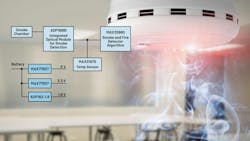Using Nanopower in Smart-Home Applications (Download)
Smart-home applications involve many technical building blocks. Some of these need to be battery-powered because they’re deployed in remote locations, without any cable connections. These include sensors, switches, meters, and portable remote controls. Such devices are usually battery-powered. To build convenient, small-form-factor, reliable, and low-cost systems, power management is critical.
Advances in nanopower technology are making such systems more easily attainable. This article introduces use cases and shows two circuit examples utilizing Analog Devices’s (ADI) MAX77837 and MAX18000 nanopower switching converters.
